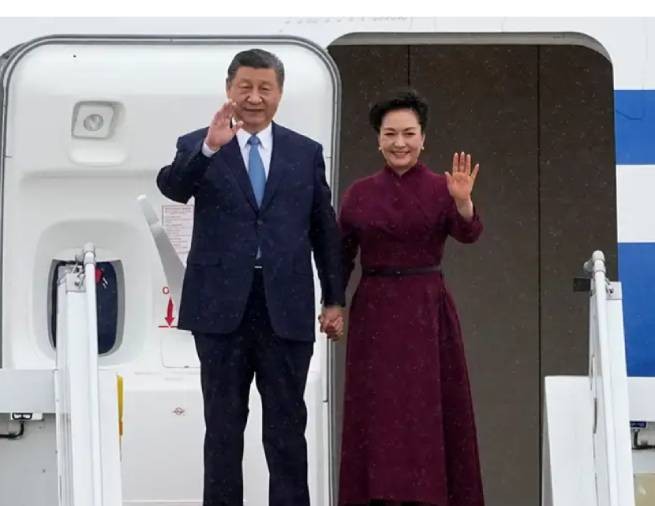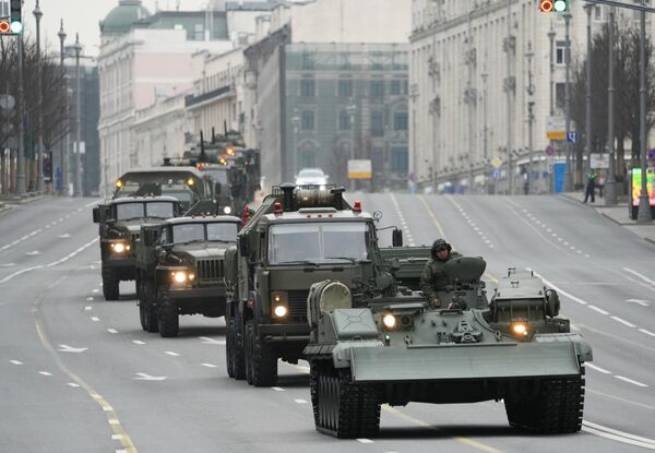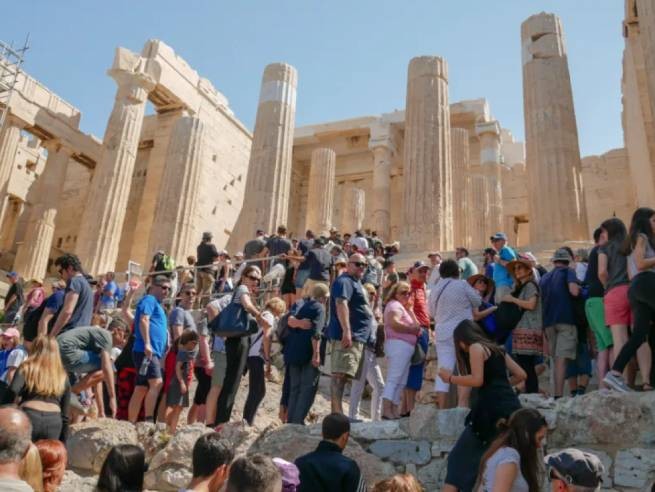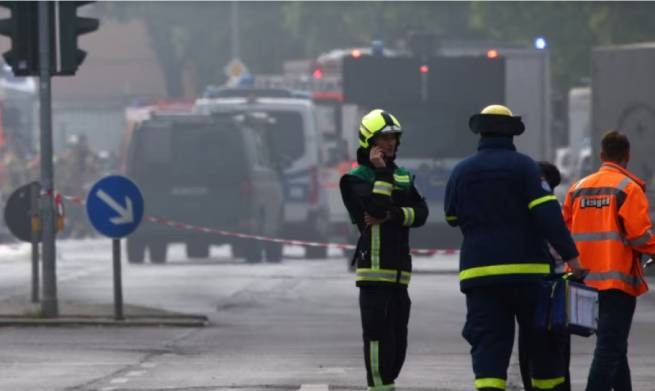The Primorsky Court of Odessa sentenced in absentia the former deputy head of the regional police Dmitry Fuchedzhi to 15 years in prison and deprivation of the rank of colonel.
As tells “UP”the verdict was announced by judge Kovalenko V.N., Fuchedzhi was tried in his absence on charges:
- in organizing riots;
- in abuse of official position, which led to tragic consequences;
- complicity in the seizure of government buildings;
- in interference with the activities of other law enforcement officials.
On May 2, 2014, Dmitry Fuchedzhi led the Anti-Maidan representatives, who staged mass riots in the central part of the city of Odessa, near the Russian Academic Theater on Grecheskaya Street. As a result of their actions, eight people received gunshot wounds, six of them died from their wounds.
On May 4, 2014, due to the inaction of Fuchedzhi, after riots in the city of the appointed acting head of the Main Directorate of the Ministry of Internal Affairs of Ukraine in the Odessa region, “anti-Maidan” seized the building of the police department, releasing 63 detainees from among their supporters. As the investigation established, Fuchedzhi verbally ordered the opening of the cells of the temporary detention center of the Odessa City Administration and the release of the detainees.
On May 6 of the same year, Fuchedzhi escaped from the hospital to the so-called “Pridnestrovian Moldavian Republic”, and from there to Russia. He has been on the wanted list since May 2014.
In September 2022, the State Bureau of Investigation announced that it had completed a special pre-trial investigation against the former deputy head of the Main Directorate of the Ministry of Internal Affairs of Ukraine in the Odessa region, the head of the public security police, Dmitry Fuchedzhi, on charges of organizing mass riots in Odessa on May 2, 2014. The case was sent to court.
What happened on May 2, 2014 in Odessa? In short:
However, while the investigation remains stubbornly silent, the death of 48 people in Odessa in 2014 is overgrown with myths. What led to this tragedy, and could it have been prevented?
In the early spring of 2014, tells The Air Force, two political centers – Kulikovo field and the monument to Richelieu – could hardly be fully called parties to the conflict. In March, the confrontation was expressed in the form of rallies in different parts of the city. There were practically no clashes between supporters and opponents of Euromaidan, they often attended opponents’ rallies to listen to what they were talking about. There was contact between them, there was a system of warning about provocations – in the event of any excesses, the parties conducted an operational investigation, without bringing the matter to an open conflict.
Against the backdrop of this rather calm situation, the tragedy that occurred on May 2 looks too contrasting. She was restored by the group investigating these events, literally every minute. The conclusions of the investigators in many provisions and conclusions intersect with the conclusions of the UN Monitoring Mission for Human Rights in Ukraine.
For many, the events of May 2 in Odessa come down to a fire in the House of Trade Unions, where 42 people died. But even before that, during the clashes in the city, six were killed. It is these events that can be called the key to understanding what happened as a result.
On this day, a football match between Kharkov Metalist and the local Chernomorets was to take place in Odessa, and many fans from Kharkov arrived. Two hours before the match, fans of both clubs and Euromaidan supporters gathered to hold a “Ukrainian Unity March” – from the center of Odessa to the Chernomorets stadium. Cathedral Square was designated as the meeting place.
Activists of Kulikovo Pole found out about the plans and began to gather nearby – on Aleksandrovsky Prospekt, near Zhukovsky Street. There were several hundred meters to Cathedral Square from there. They explained to the policemen who became interested in their activity that they were afraid that their opponents intended to demolish the camp near the House of Trade Unions, as there were rumors in the city that the city administration was going to do it.
Thus, two large groups of people were formed in the city, ready for contact combat – in helmets, with shields and bats. The police failed to separate them, clashes and fights began. The groups were actively maneuvering along Grecheskaya, Deribasovskaya and Preobrazhenskaya streets and adjacent alleys.
Smoke bombs, firecrackers, paving stones, Molotov cocktails were used. There were wounded. Quite quickly, shots began to sound from both sides, and at 16:10 the first person died – a member of the “Right Sector” Igor Ivanov. He was shot from the crowd of the “Odessa squad” from a weapon similar to a Kalashnikov assault rifle or a carbine based on it. The shooter was filmed and even identified.
Firearms, traumatic and pneumatic weapons were seen in the hands of representatives of both sides. The dead also belonged to different camps – two people were killed among the supporters of the Maidan, four – among their opponents. Many people were injured and wounded.
In the end, the activists of Kulikovo Pole were in the minority – they were partially dispersed, partially detained by the police and taken out under guard from the scene of clashes – and began to retreat to Kulikovo Pole. After the fights in the city center began to subside, the excited supporters of the Maidan moved to the House of Trade Unions.
Finding out exactly who called on people near the House of Trade Unions to hide inside and barricade the entrance is now almost impossible. The footage taken at that moment on the Kulikovo field shows how people are dismantling the camp and trying to build an impromptu line of defense at the entrance to the House of Trade Unions. An electric generator, gasoline for it and other things that were in the camp were brought into the building.
During those few hours, from 14:30 to 18:00, when clashes continued in the center, a lot of people came to Kulikovo field – both active supporters and just curious ones. As a result, 400 people could take refuge in the house – this figure was given firefighters. Odessa resident Vladimir Sargsyan, who is investigating as part of the May 2 Group, says:
“Some of them were civilized people, sympathizers, let’s say, came and went. Well, on the wave of “we won’t forget, we won’t forgive”, “we will defend” and other slogans, they went in and decided to hold the line … Pavlov’s house … There hit, for example, an old woman who was at a tram stop. Somewhere 400 meters from the House of Trade Unions. And someone ran up and shouted: “Evil Bandera are coming here, they will kill, hide in the house. “Who – she does not know, “She doesn’t remember, she almost fainted there, she was ill for a very long time after she was rescued. And the representatives of the Euromaidan, by the way. There was a schizophrenic invalid, he had a second group of disability for schizophrenia, struck in his rights. He went to Kulikovo field, because that they poured tea for him there and listened to him there. Here is such a random person. He died. The anti-Maidan was not going to come out initially, there was no such thing … Moreover, there were agreements. The main forces of the Anti-Maidan left the Kulikovo field. Only a piece of the Odessa squads”.
Journalists later established the data of all the dead. All of them turned out to be Ukrainians. The widespread belief that the house caught fire after “radicals from the Right Sector organization and the so-called Maidan self-defense surrounded the building and set it on fire” is disproved by the 2 May Group’s investigation, with activists citing numerous videos as evidence.
According to the chronology, when at about 19:20 the first groups of football fans from the stadium and the participants in the clashes in the city came to Kulikovo Field, they first rushed to destroy the tent camp. Vladimir Sargsyan told the BBC that at that moment the people who came to the square were scattered and did not belong to any organization. Organized groups at that time were still in the city, where earlier clashes with the “Kulikovo Pole squads” had taken place. According to a member of the investigation team, at the very beginning, Euro- or Anti-Maidan organizations did not take a wide part in the clashes. These were unorganized, spontaneous performances in which a variety of people participated.
However, according to the May 2 Group website, both sides used Molotov cocktails. This statement is backed up by video recordings showing that the building is not yet on fire, the approaches to it are barricaded with wooden shields, and burning bottles are thrown at each other on both sides. One of the recordings shows how a bottle is thrown from the roof of the House of Trade Unions. Both sides also used firearms, and at least one person on the street was wounded by shots fired from the house.
At first, the barricades outside and the doors were engulfed in fire, but at about 19:50 the fire started inside. The fire instantly spread up the flights of stairs, people began to jump from the windows.
There is another popular belief that everyone who jumped out of the windows of the burning house was dealt with below by supporters of the Maidan. Video recordings made during the fire show that people who escaped from a burning building are being beaten or trying to be beaten by people on the street who look like activists speaking out in support of the Maidan – Ukrainian symbols are visible on them, many have helmets or helmets on their heads, shields and clubs. But the same recordings also show that other activists are trying to save people who are suffocating in the smoke.
They organized corridors along which the wounded were evacuated, protecting them from the crowd, constructing rescue means from improvised means – the stage structures near the House of Trade Unions were used as an impromptu fire escape. Forensic expert Boris Yavorsky, who arrived to examine the dead as part of the investigation team at about 23:00, recalls:
“Most of the participants from the other side had no intention to destroy the enemy’s manpower. This tragic outcome arose quite unexpectedly for all parties. At the time of our arrival, those dead who fell out of the windows and turned out to be outside the building. At that time, some vague, incomprehensible movements were still taking place inside the building. Someone was barricading, someone was besieging someone inside, storming, some kind of confrontation was also taking place on the roof. At that time, we limited ourselves to that they examined the bodies that were already outside.”
Inspection of the bodies inside the house was done by another group. When asked if there were those who could have been killed on the ground near the House of Trade Unions among the dead, Yavorsky replied:
“I’ll be careful here, I can’t say yes or no. But at least we don’t have such damage at our disposal that would allow us to say for sure:“ Yes, this injury could not be from a fall, it’s definitely from a heel or brass knuckles.”
“What happened in Odessa on May 2 has become history. And what happens every year on the Kulikovo field, those who bring flowers there, those who go there to prevent them, these are very small groups of people,” says Vladimir Sargsyan. But no matter how many people came to Kulikovo Field or Preobrazhenskaya Street on May 2, the majority of Odessans with whom the Air Force managed to talk say: they are worried that this story has not been officially put an end to – the investigation has not been completed and no court decision has been issued. The report of the UN humanitarian mission says:
“After so many years, no one has been held responsible for the murders of six people and the death of 42 more. Some criminal cases initiated after those tragic events have stalled at the preliminary investigation stage, others at the trial stage. This indicates a lack of interest from the authorities in ensuring justice for the victims and holding the perpetrators accountable”.
A legal assessment, investigation or court decision awaits the actions of law enforcement agencies that failed to prevent riots or pacify the parties to the conflict, firefighters who arrived almost 40 minutes after they began to receive calls from a burning house. The biggest problem that can no longer be fixed is that the clashes where people died were not cordoned off, people were allowed free access to them, and possible evidence could be easily destroyed.
Apparently, as the events go down in history, less and less people care about the results of the investigation, and indeed everything that happened on May 2, 2014 on the streets of Odessa…







More Stories
Financial Times: Russia is actively preparing sabotage in Europe
Shock: Drag queen will carry the Olympic flame in Paris
Greece consistently ranks last in the EU for media freedom